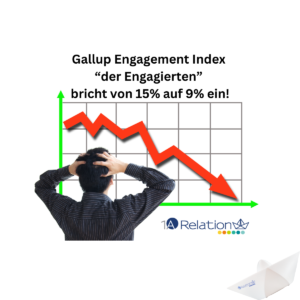The foundation of successful personalization is the interplay of three core elements: data, content, and delivery technology. But what makes the right personalization technology? The image of the eierlegende Wollmilchsau sums it up quite well: The optimum would be an integrated platform solution, as simple as possible, as complex as necessary, and the whole thing expandable at the appropriate time. However, a holistic solution is not possible or technically feasible for every company from a financial and/or technical perspective.
Unstructured information architecture
In most cases, the requirement for companies to comply with the rapidly growing channel and technology landscape has led to an unstructured implementation of systems and tools. This is because often when another channel has been added to the existing marketing mix or customer communications, additional technology has also been purchased to implement it.
This means that the data that exists in the company is available in different places, most of which are also not linked to each other. These data silos contain unclear, incorrect or outdated data, possibly also duplicates. Real-time exchange of data or real-time communication with customers is not possible. There are no complete data profiles for the respective customers. Think of it like a defragmented hard drive or a chaotically managed warehouse, except that in the latter case, the associated software does not always know where the materials have been stored! This increases your data protection risk if, for example, the customer requests information in accordance with Art. 15 (1) of the GDPR and you do not know where the data is stored or how it was used.[1]

Maintaining consistency
The customer, however, wants a hassle-free customer experience, regardless of when, where, and on what device it takes place. He is not interested in the information architecture and data management difficulties that exist within the company. Companies are thus required to create a technical solution that creates proper and standardized integration and sharing of data across different systems.
As a company, you need to have a clear idea of your goals and consequently your strategy in order to select the right tools. Consider not only customer requirements, but also the needs and requirements of your business and employees. What do you want to achieve? What can your employees do? What is already in place? The result, the target picture, is what is often referred to in the industry as the “big picture” of the IT landscape.
On this basis, select which technologies and tools are important to you and how you want to organize them. Don’t make it too complex, but also remember that the solutions you select must be user-friendly. Keep in mind that customers use different devices, platforms and channels in parallel in their daily lives, as well as new channels may be added in the future and existing ones may become less important. Select your tools in such a way that they are dynamic, i.e. that they can “grow with you” and possibly also cover new tasks in the future. As an independent and neutral consulting company, 1A Relations GmbH will be happy to help you select the software that fits your needs.
Also, don’t forget about developments regarding marketing automation and AI. AI systems that continuously learn and adapt to the latest user context can radically change the way a company uses predictive models and data science for customer contact.
In which of the following areas is the use of AI in marketing particularly promising?

What to consider when selecting technology for personalization.
Here is a step-by-step list of the approach to the tasks already mentioned:
- First the strategy, then the technology
- An important foundation is address and data quality. There are usually 15 to 20 variables that play a role at the start. For these selected variables, the fill level as well as the quality should be very high.
- Is a tool already available for planned personalization measures or can an existing tool also be adapted for this purpose?
All further steps can be found in the white paper “The Personalization Manual”:

A new organizational form is imperative
The topic of personalization must be addressed by a company as a whole. As already mentioned, data silos have formed in most companies. Teams and departments work with different information and systems; there is not necessarily an exchange ꟷ it is sometimes not even desired by those involved.
Existing data is fragmented, it is not available for all applications, and the lack of common standards makes it difficult to communicate and merge data across applications. Even if internally different departments have customer contact across different phases of the customer journey, a (potential) customer sees a company as a single entity. It therefore takes either a single data source, good coordination of a process owner, or optimally coordinated internal communication – preferably all together – for customers to have a smooth and satisfying customer experience. Above all, however, there absolutely must be acceptance for this form of customer approach within the company itself, and the strategy and implementation must be supported by everyone involved. This point is even more important than the introduction of tools for personalizing customer contact, because without employees who see a point in using these technologies, the beautiful, useful and probably expensive tools won’t help you at all.
A function-oriented organization is the biggest brake on customer orientation.
Georg Blum. The CRM-Manifesto,https://www.crm-tech.world/en/leadership-management-2/the-crm-manifesto-companies-that-are-positioned-according-to-functions-will-never-be-customer-oriented-per-se-why/
Click here for part 1 and part 2.
Note: This is a machine translation. It is neither 100% complete nor 100% correct. We can therefore not guarantee the result.












